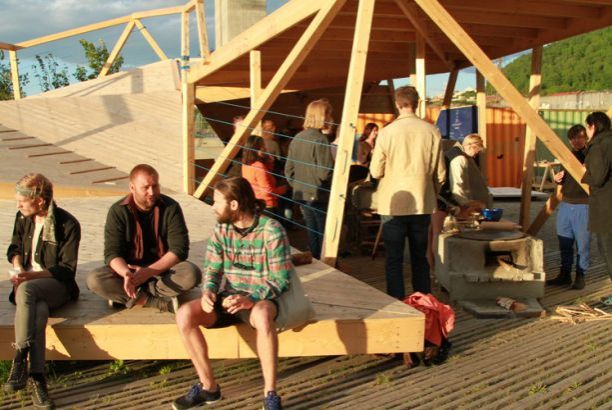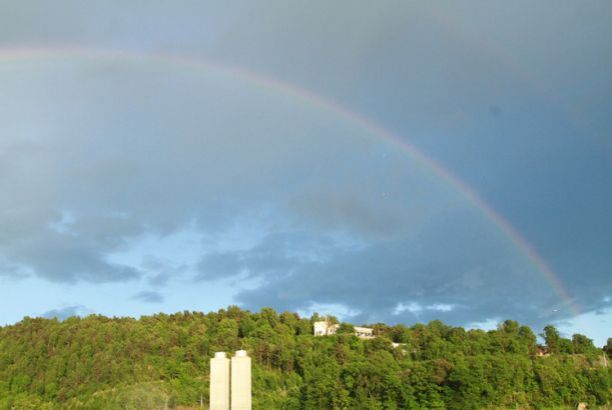
In the baking Scandinavian sun, people gather at the waterfront of Loallamenningen, Oslo, to partake in the Flatbread Society’s (FBS) collaborative session on Bakehouse Bjørvika, a two-part workshop on 'Alternative Economies' and 'Form and Function'.
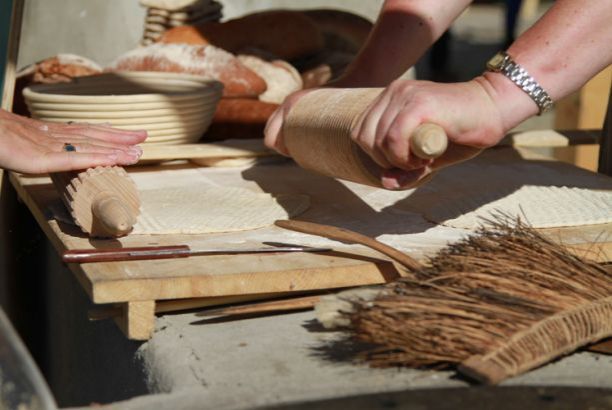
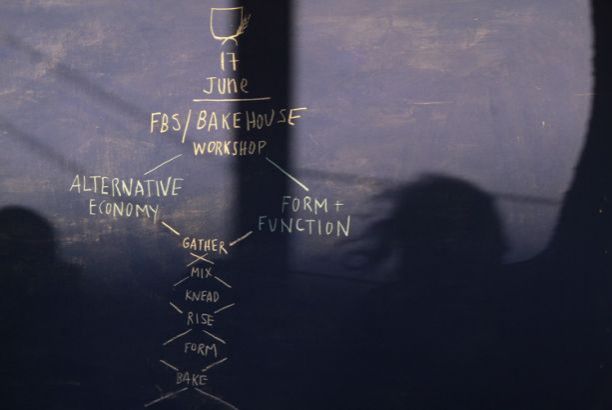
It's six-o-clock and the Bakehouse is full of people, the oven filled with buns. The workshop of today is on alternative economies and the form and function of a future, permanent Bakehouse, in an attempt to imagine new and wonderful scenarios to come. Everything will be discussed along a continuum ranging from OPEN to CLOSED. The crowd, counting around twenty five heads, will be divided into their chosen respective groups and discourse.
"The primary focus is bringing people together. We are also interested in bringing disparate people, with maybe something in common, together, here. There might be awkwardness, confrontation, and surprise", says Amy Franceschini.
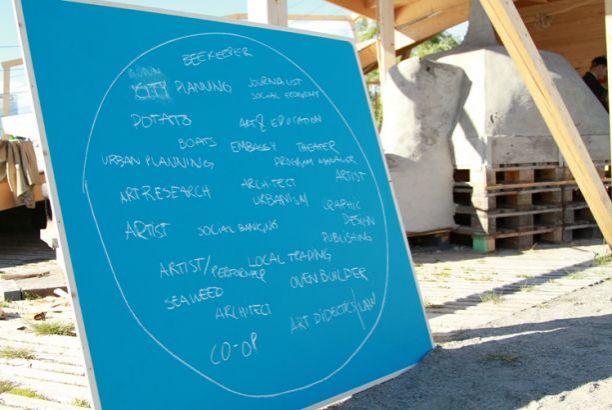
Something we've lost in our society, is coming together to debate. Someone once said: "The ATM has taken away the possibility to having a quarrel with the bankers." Same goes for Twitter, Facebook, and social media in general, they produce 'safe relations'. We've made this space so people can come together and ... Argue!
Form and Function : part I
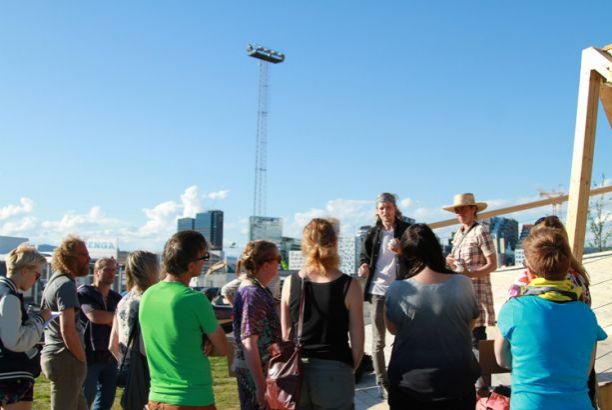
What will make it work? What is needed for Bjørvika? What does Oslo need?
Mads Pålsrud, the founder of Growlab Oslo, and Amy Franceschini facilitate the Form and Function part of the workshop. They pass out worksheets on wooden writing boards and ask everyone to think of existing models and to write down, in pairs of two, projects they find interesting and why. The group is squirming like an anthill, spread out on the open space, climbing up on the construction which functions as roof of the Bakehouse. The small wooden writing boards serve as an interface for collaboration. They sit on top of two people’s legs.
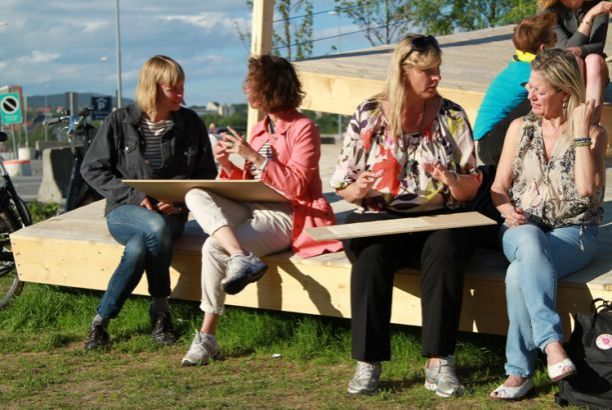

Freshly baked flatbread circulates along with the ideas and opinions of the participants. The wind is blowing in Bjørvika, the sun is heating up the barefoot feet, the high-healed ones, the skirts and suits participating. The baker, Emmanuel Rang, is discussing a potential wind-mill with Thanh Ha who owns the old German boat laying right next to the Bakehouse.
Alternative Economies : part I
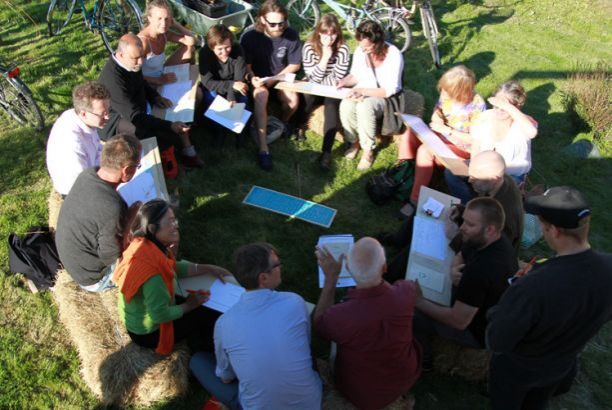
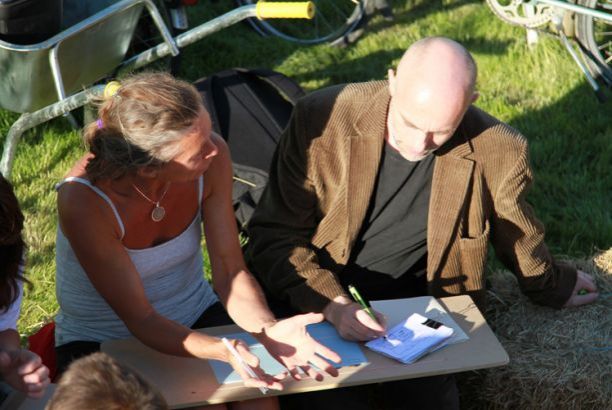
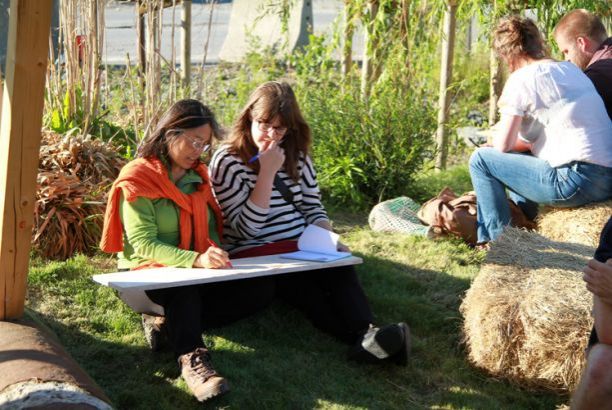

In the workshop for alternative economies, led by Audun Engh, participants, two-by-two are instructed to write ideas for existing economical models and place them along a continuum ranging from very open to closed systems.
Someone suggests that the Bakehouse could be inspired by the Oslo Kooperativ model. Here customers get to pick up fresh goods at a monthly basis for a seasonal fee. In addition that can sign up for a more active role and do volunteer work. People nod their heads and make agreeing noises. Notes are taken. More models follow on a string:
Amy checks in with the group. She and Audun Engh consult each other.
Audun: "They are even making up plans for new buildings, we have to be clear about them listing only existing economic models.
Amy's reply: "I know! They are dreaming already!
Sharing Existing Models
Both groups join together to place their worksheets on the large continuum board. Each group presents a few models to inspire thinking for the next session of the workshop.
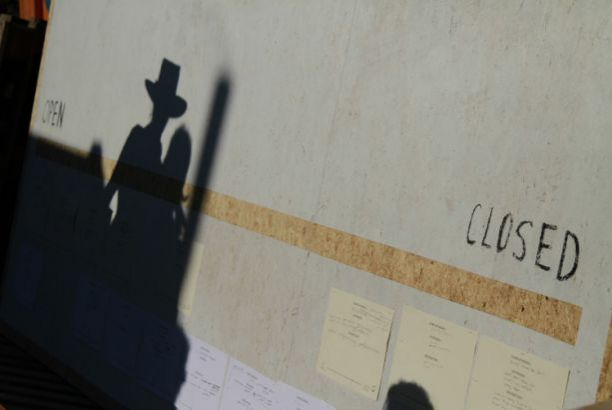


Form and Function : part II
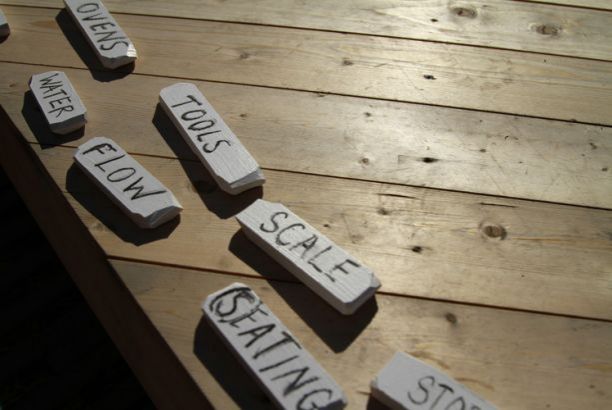
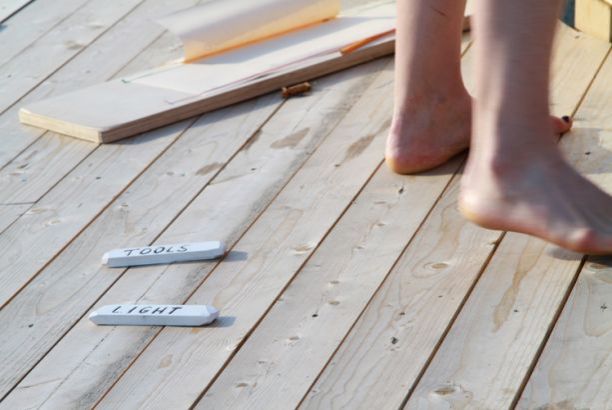
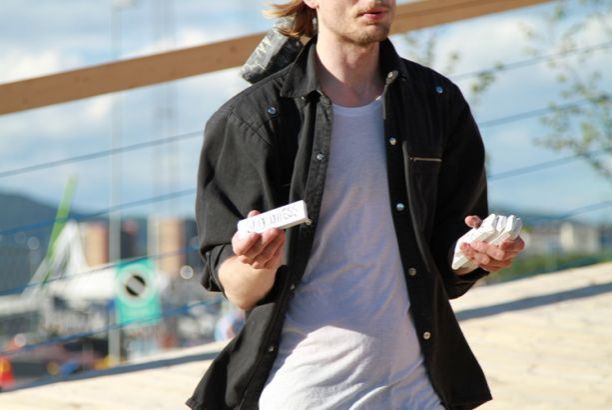
Different keywords, such as FARMING, GATHERING, SEATING AND EATING, OVENS, LIGHT, SCALE and DETAILS are being placed around the Bakehouse, so the participants can go for a walk while contemplating the aim of part two of the workshop: Figuring out how the future permanent bakery should look and flow, focusing on various aspects of the interior and exterior construction and its function within this exact site.

While thinking, discussing and dreaming, we are invited to draw the idea, and at last, shape a model of it with dough, then bake it!
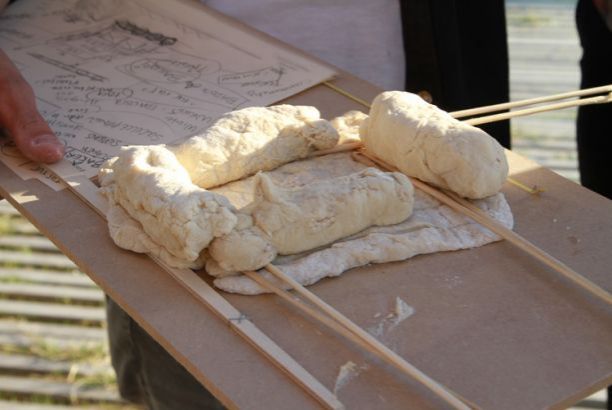
The Phd-scientist and academic and the city-planner want a sauna, a long table and three walls. The baker, the bio-dynamic and the NGO-worker want a mill and a huge tree. The art-professor would like the bakery to be both inside and outside. And there must be an overlying DIY-spirit to the place. At all times.
When the models have been shaped and baked in the oven, we are left with a boat, a squid-looking-tree-formation, a jump-tower, a braid and some balls, to mention a few.
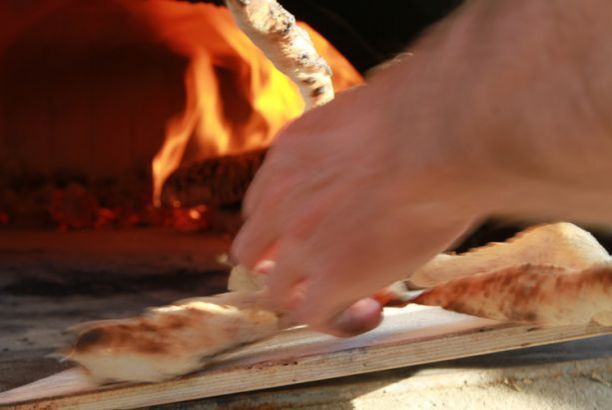
"We have to gain power to mill grain flour!", says the baker Emmanuel Rang.
"We will serve food and serve knowledge. There can be families with small income who come and bakes in exchange of cleaning and maintaining the place", someone suggests.
The Meeting Point is shaped like a bread hugging itself and inquires that you are ready to be trusted to be active in the Bakehouse.
Alternative Economies : part II

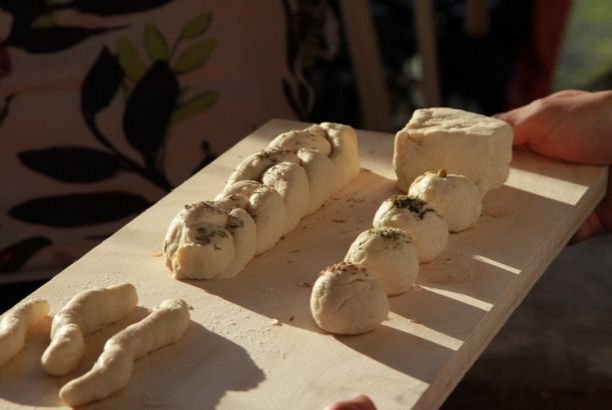
In alternative economies, the participants are also getting ready to bake their ideas. The first Secretary from the Belgian Embassy has taken the time to participate in the workshop, and is kneading dough with the rest of the group. He seems to be working phenomenologically towards his goal of a model on microeconomics: "I've been wondering what it would look like. I think I'll start with a circle.
Architect Marius Grønning is braiding dough, attempting to illustrate something 'architectural', while a more snake-like form is meant to symbolize 'atmosphere'. Others knead their dough into the shape of a flower.
A couple suggests making an international street food fair, like the one at Grønland Torg (Grønland Square) or in Bogstadsveien (Bogstad road) in Oslo. But how to illustrate this in dough? Use different spices?
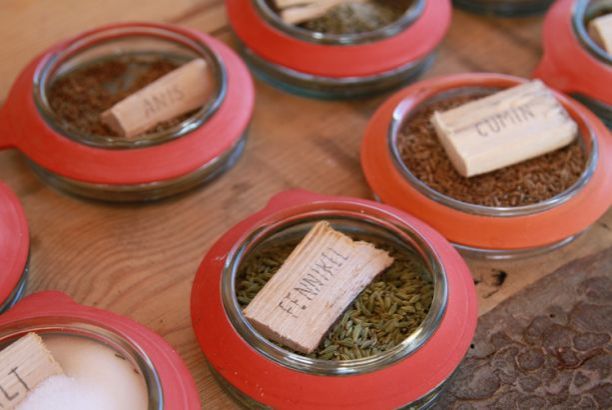
Bread for the Masses


For the last part of the workshop, both groups come together, again in front of the continuum of the two extremes OPEN to CLOSED. Here the participants are asked to present their model, the written and drawn description of it, and to give a short explanation of their choices and wishes for the future permanent Bakehouse.
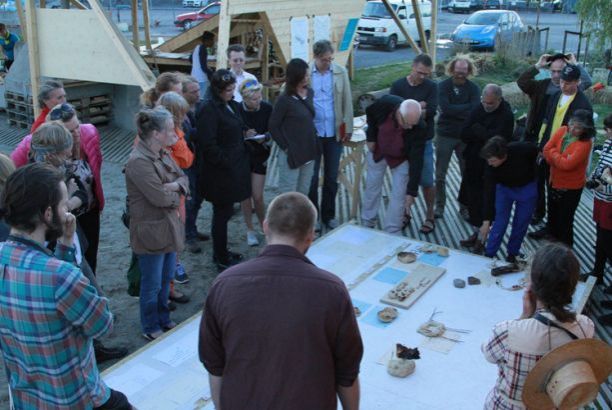
The final results shows a high diversity in physical and organizational forms:
1. Oven around a tree
Its a bakery with a big oak in the middle, they're almost extinct! Then we have a big table with a windmill on the top, so you can grind your grain. Build relation with boat owners in public harbor to take the bread out to the islands.
2. The International Food Market
Organized around a bake house, because we need a place to serve food and learn about how to prepare food from all over the world. In addition to sharing knowledge on food and bread, peopl could work and clean, in exchange for their own stall on the market. It could run only on weekends, or in spring and summer. Everyone is welcome to participate, but there has to be someone who organises it and deals with food regulations.
3. Open Group Bakery
A bakery shop made like a regular shop, based on the 7-11 format, the most public shop we know. Always open, outsourcing labor to schools/retired people/any other interest group ((baker, (art) school, etc ..)) Financed by sales one day per week. The administration should be as small as possible. A minimum sized, closed compartment for contracts, certificates and supplies.
4. "Tut tut" Sauna & Bakery
Combined sauna and bakery, a community facility and a theater intersecting in a patio. Seasonal different uses. The structure is built on train tracks, it divides into different parts used to open and close the structure, and carry products, maybe even the bakery itself, to new places.
5. The Meeting Point (*this piece was performed)
The model was bread that embraced itself, a bit closed, but a bit open, a physical meeting point. To be a part of the project you would need an apprenticeship to show you can be trusted. This could lead to LETS credits.
6. Medieval Bakehouse + Live-in artist/baker
A practice based space in an ancient building, where one can make bread using medieval recipes, the bakers could dwell there permanently, making bread and giving courses. Drop-in baking welcome. Financed by NAV (Norwegian Labor and welfare service). It could even be a workplace for adolescents or long-term unemployed.
7. The Crystal Palace
Fantastic iron structure with glass walls. Areas that open up to make smaller or bigger spaces. The glass can be used to collect water and generate solar energy. Oven clusters of various designs inside and outside.
8. The Flower Model
The center of the flower is thought of as a headquarters where key activities, like courses and lectures of different kinds, take place, while the the petals are like silos for other related activities: a food exchange , an open bakehouse, a mill, Oslo Kooperativ, a pop-up restaurant, a food exchange market? Funding could be communal, private, or even financed by the courses and lectures given.
9. The boat
A miniature version of the viking ship in Hamar, since we are by the fjord. You can close it for security reasons with hydraulics and even have storage underground.
10. Public Oven
Solid permanent structure with fireproof area and a tall chimney, signaling to surroundings that fire is present. Some shelter. Maintenance by public services.
Amy gives an overview of the results: “Many people tended towards openness and almost none of the models were completely CLOSED. The commonality in many of the models was the activation of a community to maintain and sustain the permanent Bakehouse. Let’s take this linear approach and put it in a circular formation to filter out some of the ideas".
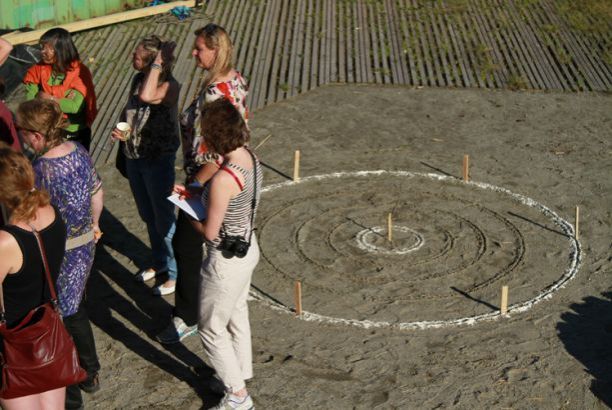
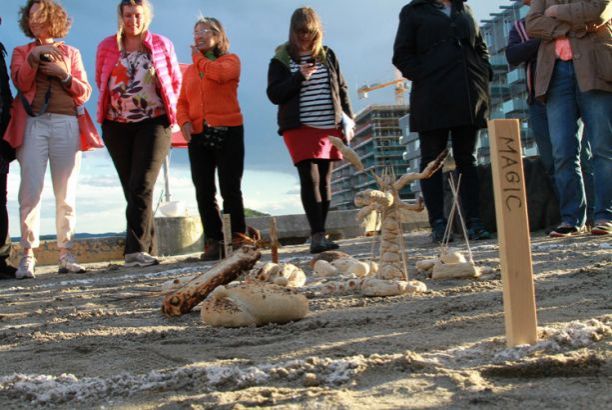
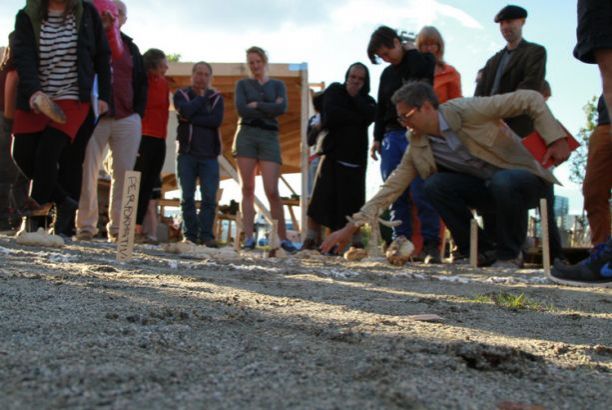
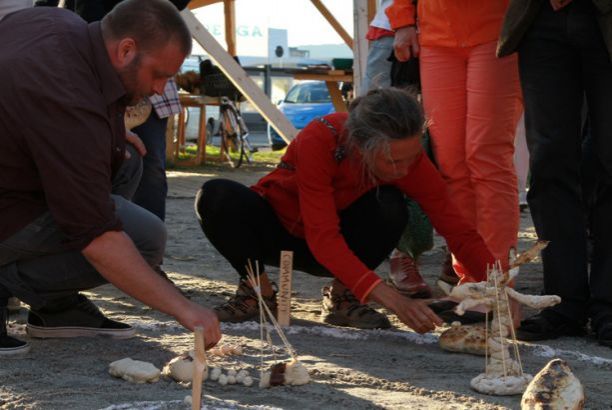
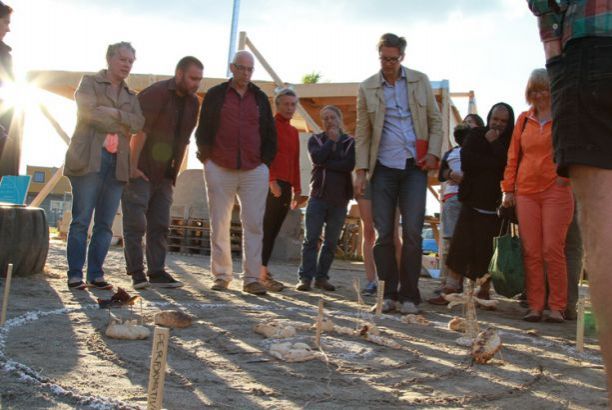
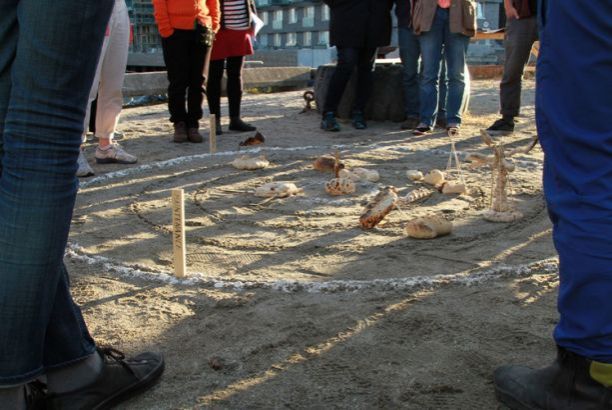
Lastly, the popularity of the models are tested using a circular CANDO-diagram.
Here all the models were placed, judged, nudged and dragged in different directions within a circle with tangent-themed poles, like 'resource', 'community', 'performativity', 'magic', or 'maintenance'. One model seems to be missing though. The attaché's micro-economic Frog. We confront the first Secretary to the Belgian embassy: "I pocketed it, to bring home for my son. It lost its form. It inflated, maybe too much yeast".
